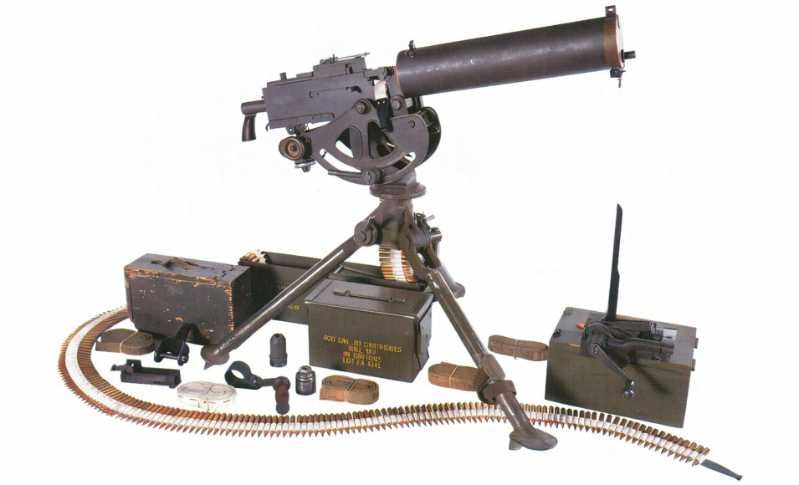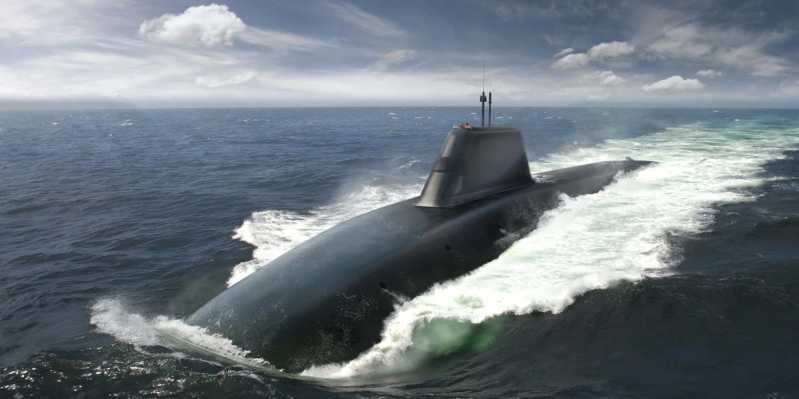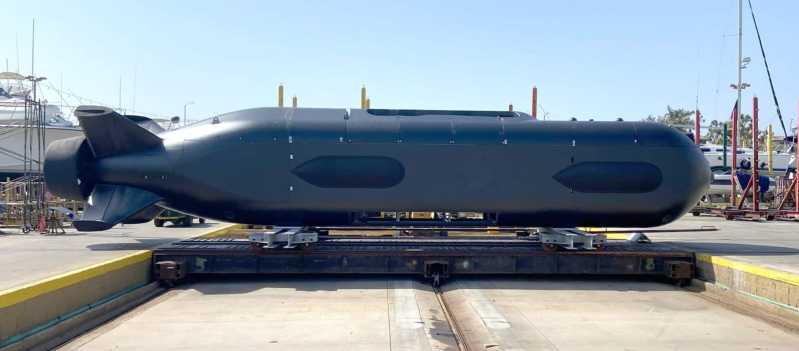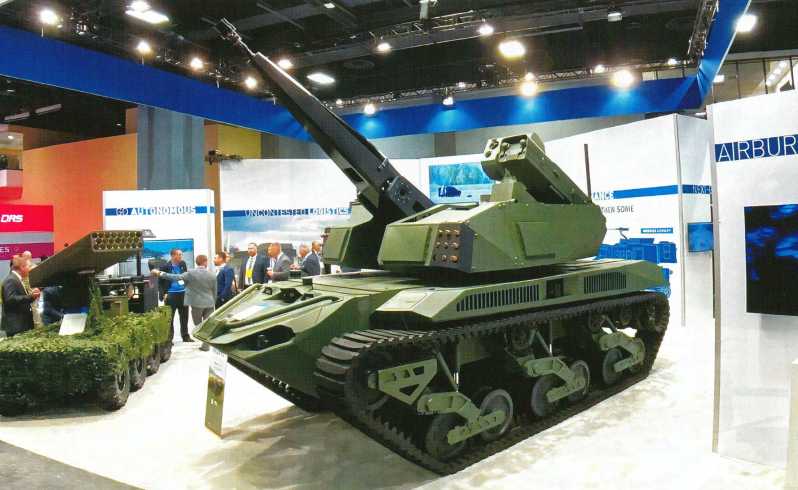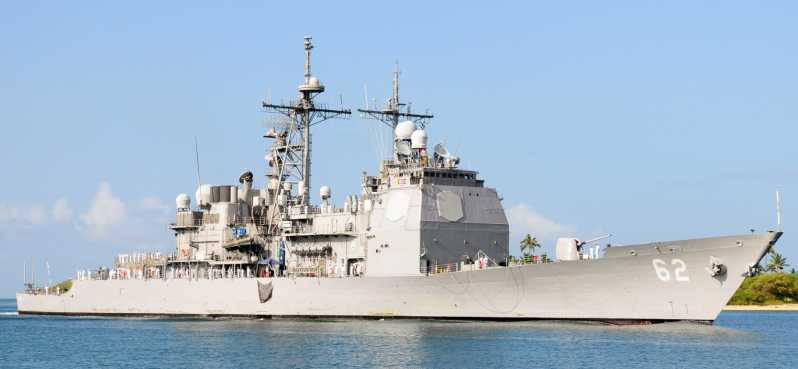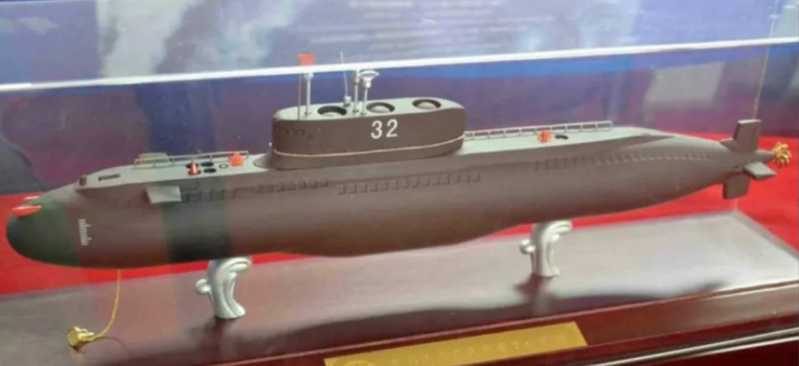On November 20, 2023, a P-8A Poseidon anti-submarine patrol aircraft belonging to the US Navy ran off the runway at a naval base in Kaneohe Bay, Hawaii, and then fell into the sea. The US military claimed that none of the nine members on board were injured or killed, but the aircraft was not salvaged until December 2. This accident was the first major accident of the P-8 series anti-submarine aircraft since it was officially put into service in 2013. Fortunately, it did not cause much damage. Not only were there no casualties, but even the aircraft was not damaged much. It can be salvaged and repaired and can continue to be used.
It has to be said that the Poseidon anti-submarine aircraft is quite durable. No wonder so many countries have introduced it. So, what advantages does this aircraft have? Why is it favored by the US military and its allies? What competitors may challenge it in the future?
Fixed-wing anti-submarine aircraft
The sea areas on the earth are vast and the ocean conditions are complex. Submarines performing combat missions underwater have a series of characteristics such as strong surprise and great lethality, and have a strong deterrent power in maritime military confrontations. Modern military powers generally attach importance to systematic operations, and various types of anti-submarine aircraft are an important part of the aviation anti-submarine (ASW) combat system. Aviation anti-submarine originated in the First World War, and the first country that dared to "take the lead" in this field was the United States: In 1915, the US Navy modified the Curtiss H-4 seaplane, designed a new ship-shaped fuselage, and replaced it with a more powerful engine, thus creating the world’s first anti-submarine patrol aircraft.
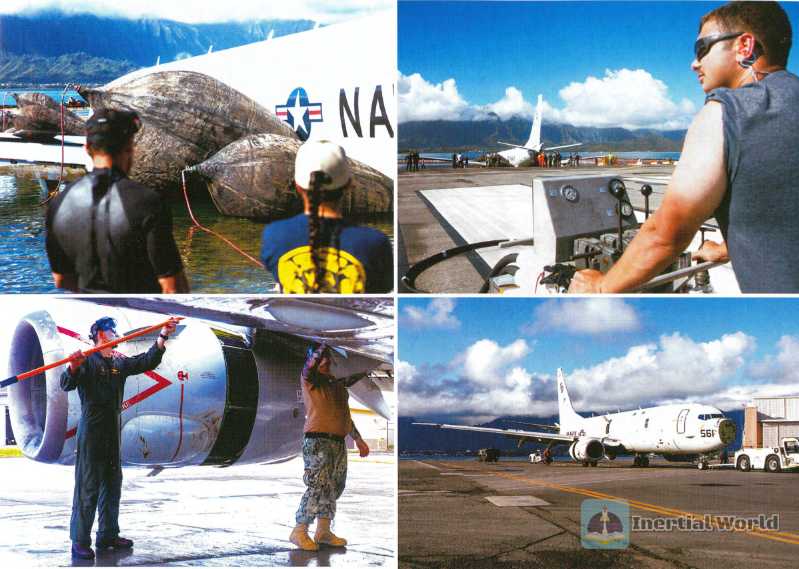
Before and after World War II, anti-submarine platforms, submarine search equipment, and anti-submarine weapons and other equipment had been greatly improved. During World War II, the results of aviation anti-submarine (including joint sea and air anti-submarine) even surpassed surface ships. At that time, the advancement of technology greatly enhanced the strength of anti-submarine aircraft, and the specific types of anti-submarine aircraft were more than those during World War I. There were not only seaplanes, but also ship-based anti-submarine aircraft modified from land-based aircraft, which were not available during World War I. To this day, airborne sea radars, magnetic anomaly detectors, sonar buoys, etc. that were developed during World War II are still key tactical equipment for fixed-wing anti-submarine aircraft and some anti-submarine helicopters.
From the "Cold War" to the present, various types of fixed-wing anti-submarine aircraft (especially fixed-wing anti-submarine aircraft that take off and land on land) have gradually become the main aviation anti-submarine combat forces of major military powers. Many professional anti-submarine aircraft platforms have emerged, such as the P-3C "Orion" and the Il-38 "Dolphin". Compared with various anti-submarine helicopters (which also have higher deployment flexibility and can take off and land on destroyers and escort ships), fixed-wing anti-submarine aircraft obviously have more advantages, including a larger combat radius and endurance, higher flight speed, greater load capacity, and stronger versatility and multi-task capabilities.
US anti-submarine forces
Since World War I, the United States has attached great importance to the construction of anti-submarine capabilities. During the "Cold War", in order to counter the various advanced nuclear-powered and conventional-powered submarines of the Soviet Red Navy, the United States developed and deployed a large number of new anti-submarine facilities and equipment, especially deployed in the Western Pacific region (the United States The United States has the world’s largest acoustic surveillance system, including the SOSUS "fixed listening array system" and the FDS/FDS-C "fixed distribution system".
The United States began to build three north-south SOSUS systems in the Pacific in the 1950s, consisting of shore-based sonar stations, a series of hydrophone arrays and sonar buoys deployed on the seabed. This is a "permanent" fixed system deployed on the seabed of the target sea area, important straits and military fortresses. It is mainly used to monitor the submarine targets of the imaginary enemy and still plays a powerful role.
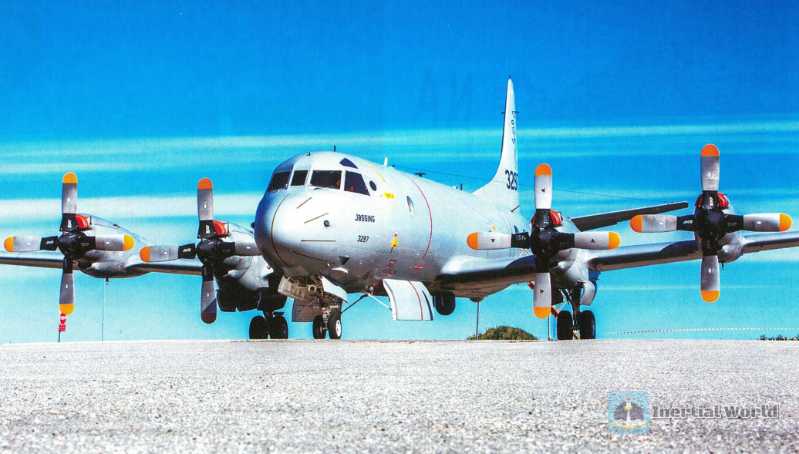
The US anti-submarine warfare system is very complete, and can be divided into space anti-submarine equipment, surface anti-submarine equipment, underwater anti-submarine equipment and aviation anti-submarine equipment according to the physical dimension. Among them, space anti-submarine equipment mainly includes optical imaging satellites, radar imaging satellites, electronic reconnaissance satellites, etc.; surface anti-submarine equipment includes not only aircraft carriers, cruisers, destroyers, frigates and other main warships, but also ocean surveillance ships for anti-submarine surveillance and early warning; underwater anti-submarine equipment mainly includes nuclear submarines and underwater fixed acoustic monitoring systems installed on the seabed to monitor and warn submarines; aviation anti-submarine equipment mainly includes various anti-submarine helicopters and fixed-wing anti-submarine aircraft.
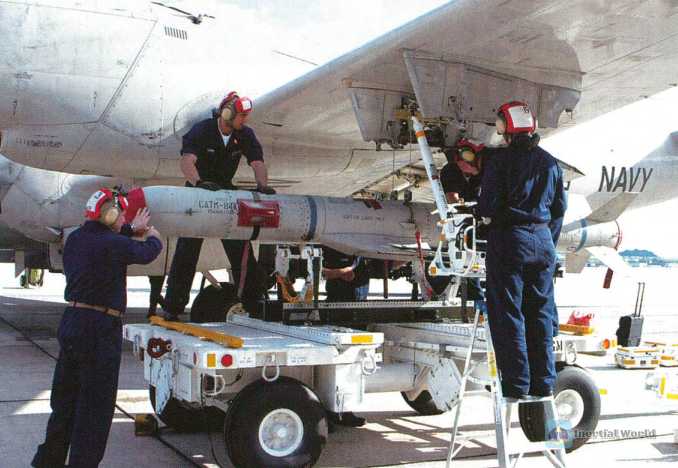
During the Cold War, the most classic aviation anti-submarine equipment developed by the United States was the famous P-3C "Orion" turboprop fixed-wing anti-submarine patrol aircraft. The P-3C anti-submarine aircraft made its first successful flight on November 25, 1959. The original mass-produced version was code-named P-3A and officially entered service in 1962. A total of 757 aircraft were produced over the decades (including 650 produced by Lockheed Martin and 107 produced by Kawasaki of Japan under license). It has served in the military of 19 countries and regions including the United States, Japan, Brazil, Canada, Germany, Portugal, Iran, South Korea, and Pakistan (the military of 13 countries and regions are still using this model). It is one of the most successful anti-submarine aircraft models in the history of the United States and its allies.
The P-3C anti-submarine aircraft can carry 11 crew members. The aircraft is 35.6 meters long, 30.4 meters wide, 10.3 meters high, and has a wing area of 120.8 square meters. The aircraft has an empty weight of 35 tons, a maximum flight speed of 750 kilometers per hour, a cruising speed of 610 kilometers per hour, and a maximum range of 9,000 kilometers. It is equipped with GPS global extraterrestrial positioning system, AN/APS-137B(V)5 search radar, AN/AVX-1 optoelectronic sensing system, AN/AAS-36A infrared detection system, AN/UYS-1(V) advanced signal processing system for filtering sonar signals, and CP-2044 airborne computer.
In terms of airborne weapons and equipment, the P-3C anti-submarine aircraft can carry up to 9 tons of various weapons and equipment, such as Mk-46 torpedoes, Mk-50 torpedoes, Mk-54 torpedoes, various types of mines, depth charges, AGM-84 "Harpoon" anti-ship missiles and AGM-65 "Maverick" air-to-ground missiles. In addition, the P-3C anti-submarine aircraft is also equipped with 48 sonar buoys (the theoretical maximum is 50). It is worth mentioning that thanks to its excellent basic performance, the P-30 has also spawned many sub-models such as the P-3AEW&C early warning aircraft, WP-3D meteorological research aircraft, UP-3D electronic warfare aircraft and VP-3A transport aircraft.
"Poseidon" development background
As mentioned above, the main force of the US Navy’s anti-submarine warfare system is various fixed-wing anti-submarine aircraft, of which the two most important models are P-3C "Orion" and P-8A "Poseidon" (Poseidon, transliterated as "Poseidon"). As of the end of 2023, the US Navy is equipped with a total of 17 P-3Cs and 130 P-8As (at least 9 more will be added in the future). Among them, the P-8A will gradually replace the P-3C and will become the only main and core model in the US military’s aviation anti-submarine system.
In the 1990s, most of the P-3C, the main force of the US anti-submarine aircraft, were approaching the end of their service life. Due to the serious aging of the fuselage, the first batch of P-3C began to be retired in 2003. Although the aircraft will still be in service until the mid-2020s after the mid-term life extension plan, the increasing number of tasks has overwhelmed the increasingly aging fuselage. This "Cold War survivor" must be replaced by a more advanced successor.
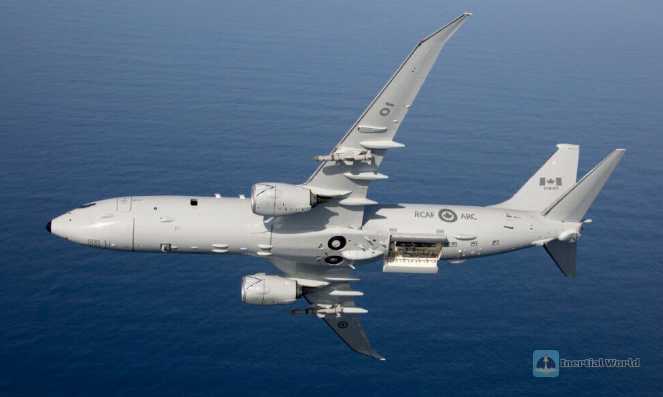
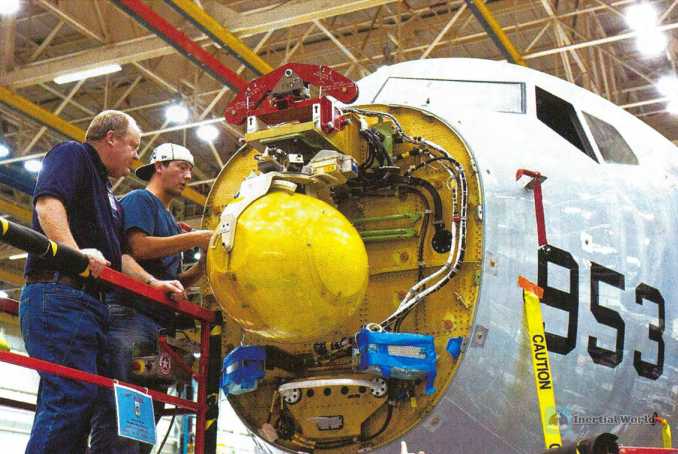
In the late 1990s, the US Navy launched the MMA "Multi-Mission Maritime Patrol Aircraft" research program. In mid-2000, the US Navy completed the concept research report of the MMA. In March 2000, the Pentagon’s Equipment Procurement Committee approved the MMA plan, marking the first milestone of the MMA plan. On June 10, 2000, the U.S. Naval Air Systems Command awarded Boeing, Lockheed Martin and other four arms giants a MMA concept research contract worth about $500,000. On June 18, 2000, Boeing’s plan was first exposed. After many revisions, the final plan was set as the Boeing 737-900 wing plus the Boeing 737-800 fuselage plan. At the same time, the position of the weapon pod was also moved to the rear of the wing. There are more than 5 workstations in the main cabin, and two automatic flip buoy launchers are installed. 4 to 6 wing external attachment points can be mounted on air-to-ground missiles and unguided rockets. The built-in weapon bay can also carry torpedoes, depth charges and mines, and the internal integrated airborne equipment will also give priority to maritime anti-submarine/patrol missions.
In March 2005, the US Navy officially named the MMA the P-8A anti-submarine patrol aircraft, code-named "Poseidon". In December 2007, the first Boeing P-8A anti-submarine aircraft began production. On April 25, 2009, the first test aircraft P-8AT-1 completed its first flight, which took 3 hours and 31 minutes, and the maximum flight altitude reached 7,620 meters. On March 4, 2012, Boeing officially delivered the first mass-produced P-8A to the US Navy in Seattle, numbered LRIP-1.
In December 2013, six P-8As of the 16th Patrol Squadron of the US Navy were deployed to Kadena Air Base in Okinawa Prefecture in southwestern Japan, and jointly performed missions with the P-3C flight squadron that had been deployed to the base. This marks the official service of the P-8A and the beginning of the formation of initial combat capabilities.
Performance characteristics of Poseidon
The purchase cost of a single P-8A anti-submarine aircraft is about 257 million US dollars (2015 price). It can carry 11 crew members. The aircraft is 39.47 meters long, 37.64 meters wide, and 12.83 meters high.

The empty weight of the aircraft is 62.73 tons, the maximum flight weight is 85.82 tons, and it uses two CFM56-7B27A turbofan jet engines (the maximum thrust of a single engine is 121 kilonewtons), the maximum flight altitude is 12,496 meters, the maximum flight speed is 907 kilometers per hour, the cruising speed is 815 kilometers per hour, the combat radius is 2,225 kilometers (4 hours of air time), and the maximum range is 8,300 kilometers.
The P-8A anti-submarine aircraft can carry up to about 100 sonar buoys, and its main radar model is AN/APY-10, developed by Raytheon Company of the United States. The P-8A anti-submarine aircraft is equipped with up to 7 weapon hanging points (including a built-in weapon bay), which can carry a variety of anti-ship/land attack cruise missiles such as AGM-84H/K, SLAMER, AGM-88 AARGM-ER, and Mk-54 torpedoes, various types of mines, depth charges and other weapons and equipment. Among them, the airborne torpedo as the main anti-submarine weapon is the M k-54 type, which represents the highest level of light airborne (airdropped) anti-submarine torpedoes in contemporary NATO countries.

The U.S. Navy believes that the end of the "Cold War" heralds a fundamental change in the anti-submarine combat environment, and future threats mainly come from new silent harbor boats operating in shallow waters near the coast with poor acoustic conditions. Changes in the anti-submarine environment require corresponding changes in torpedo technology to increase its ability to deal with new silent submarines (such as diesel-electric submarines that use AIP technology). The Mk-54 torpedo was created to adapt to this situation. To be fair, this type of torpedo can also be regarded as a "patchwork" product, that is, a low-cost, light torpedo suitable for shallow water operations developed by using existing torpedo technology and purchasing some commercial parts and components. The Mk-54 torpedo uses the front end of the Mk-50 torpedo, the warhead and rear end of the Mk-46 torpedo, and the variable speed control valve of the Mk-48ADCAP torpedo. In the design process, a large number of commercial software such as Ada language programming software are used. It has the advantages of relatively low cost, high modularity, high technical maturity and easy maintenance.
Compared with the previous generation P-3C anti-submarine aircraft
The P-8A has a larger body, faster flight speed, more airborne sonar buoys and weapons, and more advanced electronic equipment. Its AN/APY-10 radar is based on the upgraded AN/APS-137B(V)5 maritime surveillance radar equipped on the P-30 patrol aircraft. It has faster data collection capabilities, smaller size, lighter weight, higher degree of automation, longer mean trouble-free working time, and can display the climate status in real time.
AN/APY-10 radar has two working modes: high-resolution synthetic aperture radar and inverse synthetic aperture radar, and can be compatible with a variety of information-based joint combat systems. Among them, the first working mode can conduct long-range surface search, and has the functions of detecting, tracking, classifying, identifying and imaging stationary targets at sea and underwater harbor boats. The second working mode can detect, classify, track and image surfaced submarines and small and medium-sized high-speed surface ships operating in shallow coastal waters, and can also monitor and locate deep targets on shore and on land.

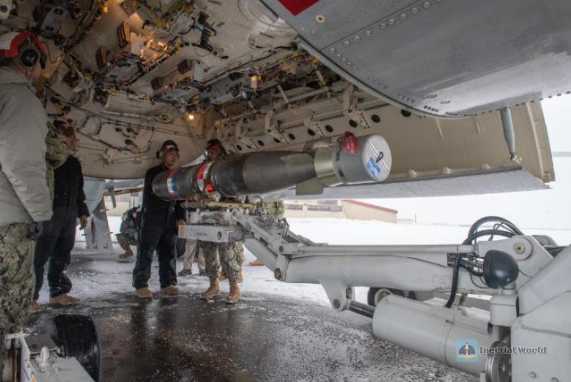
P-8A anti-submarine aircraft is equipped with more electronic warfare equipment and has better battlefield survivability. In addition to the AN/ALQ-240 radio countermeasure system, the P-8A is equipped with the "Nemesis" DIRCM infrared countermeasure system on the front and rear of the lower fuselage. The system consists of a missile alarm subsystem and a jammer launcher subsystem. It uses the "Viper" multi-band solid-state laser transmitter and has a strong ability to counter (medium and short-range) infrared guided missiles. It also has a certain multi-functional infrared detection capability. The model is also equipped with an airborne towed decoy system, which can further protect the body from missile attacks.
In addition, in terms of the underwater acoustic signal processing system, the P-8A anti-submarine aircraft is equipped with a new underwater acoustic processor developed by Boeing. The processor can receive, process and record 64-channel active/passive acoustic data, and its data processing capability is better than the 16-channel acoustic detection system equipped by the P-3C anti-submarine aircraft. In terms of magnetic detection system, P-8A is equipped with advanced digital magnetic anomaly detection system developed by CAE Canadian Aviation Electronics Company, which can search, track, locate and confirm underwater targets through magnetic field changes or anomalies. It is especially suitable for detecting new generation submarines made of non-magnetic alloy steel materials, and its submarine search performance is better than the old magnetic anomaly detector equipped by P-3C anti-submarine aircraft.
"Poseidon" upgrade plan
Generally speaking, the research, development and transformation of weapons and equipment generally follow the principle of "no progress means regression", and the US military certainly understands this principle. Recently, the US Navy awarded Boeing a contract worth 34.5 million US dollars to seek its addition of a new MCW "mission execution personnel workstation" to the P-8A anti-submarine aircraft to further improve the combat performance of the aircraft (especially the overall information level), and allow the crew to distribute tasks more evenly. The upgraded P-8A will have 6 MCW workstations (originally 5).
The MCW workstation adopts the advanced ATCA remote communication computing architecture, integrating the onboard LAN switch, computer input/output system, flight console computer and other equipment into the same chassis, and can achieve high-performance computing and network interconnection functions with a smaller size, lighter weight and lower energy consumption. Each MCW workstation is equipped with an MCDS mission computing and display system. The system can be used to manage, monitor and plan the launch of all weapons and sonar buoys. The MCDS system includes two ultra-high-resolution 24-inch display screens, and its operating interface is mainly composed of three independent PEP programmable input panels: "Search Library", "Equipment Library" and "Kill Library". The MCDS system can present a common tactical situation to all operators, display multi-layer maps and tactical layers with variable transparency, and display all local tracking and external tracking data in one view. Operators can define related tactical settings such as display and signal filters.

In addition, the US Navy is currently actively promoting the adaptation of the P-8A anti-submarine aircraft to carry the AGM-1580LRASM subsonic stealth cruise missile, and plans to promote the "P-8A+LRASM" combat mode to many overseas allies such as South Korea and Norway. The main features of the LRASM missile are strong penetration/destruction capability, high strike accuracy, high degree of intelligence, and good multi-platform use capabilities. The LRASM missile weighs 1,134 kilograms and is equipped with a 1,000-pound (about 454 kilograms) blasting and penetrating warhead (with both armor-piercing and blasting functions) or high-explosive warhead. It is mainly used to attack various types of surface ships and fixed targets on land. It is equipped with an F-107-W R-105 turbofan engine with a maximum thrust of about 0.6 tons. The maximum flight speed is 0.9 Mach and the maximum range is about 560 kilometers. It adopts a composite guidance system of "inertial guidance + GPS guidance + two-way data link + ESM detection + infrared imaging terminal guidance". It has high strike accuracy and excellent complex route planning and anti-interference capabilities. At the same time, the LRASM missile also has a strong stealth characteristic, with very low radar and infrared signal characteristics. Its front RCS is estimated to be around -40dBsm (about 0.0001 square meters).
In addition, the LRASM missile also uses advanced AI artificial intelligence technology, which can automatically sense battlefield information, and according to relevant information, autonomously change the flight trajectory to reduce the risk of being intercepted, and automatically identify, lock and attack the target. Due to the long range of the P-8A (its maximum range is 8,300 kilometers), after carrying a certain number of LRASM missiles, the P-8A can also be regarded as a "quasi-strategic bomber" with strong long-range deterrence.
Potential competitors
Overall, the P-8A is an advanced multi-functional anti-submarine patrol aircraft that combines high speed, long range, large payload and advanced information and electronic warfare capabilities. The technological advancement, versatility and persistent combat capability of the P-8A anti-submarine aircraft make it an important position in modern maritime strategy, and it is also a key "tactical asset" used by the United States and its allies for maritime patrols and anti-submarine operations today. However, with the development and advancement of new technologies, the P-8A also faces competition and challenges from certain "peers".
After entering the 2020s, the combat status of drones has risen rapidly in many local wars and regional conflicts, and has achieved a large number of "brilliant results". Anti-submarine drones are an aerial anti-submarine platform that has emerged in recent years with technological progress and combat needs. They generally take off/launch from land or ship, such as the US MQ-4C "Triton", M Q-9A "Reaper" and M Q-9B "Sea Guardian" UAVs, etc. Compared with the P-8A anti-submarine aircraft, these UAVs are not large in size, but can still be equipped with some major anti-submarine equipment, including a sea search radar installed on the belly, sonar buoys, magnetic detectors and other detection equipment and anti-submarine torpedoes mounted on the wing racks.

Compared to the large fixed-wing manned anti-submarine aircraft, anti-submarine UAVs are cheap to manufacture, have low operating costs, have long range, long air time, excellent concealment, and do not need to consider personnel fatigue and loss. Therefore, they have a wide search and surveillance range, can be close to detection, continuous or even all-day operations, can perform anti-submarine tasks alone, and can also cooperate with manned anti-submarine aircraft and submarines to carry out joint anti-submarine operations. Take the MQ-4C UAV as an example. This model was developed by Northrop Grumman, a famous American arms giant. It is 14.5 meters long and has a wingspan of 39.9 meters (basically equivalent to the wingspan of a Boeing 737 passenger aircraft/P-8A anti-submarine aircraft). It is 4.7 meters high, weighs 14.6 tons, has a cruising speed of 610 kilometers per hour, a maximum range of 15,000 kilometers, and a flight time of an astonishing 30 hours.
The biggest technical advantage of the MQ-4C UAV lies in its MFAS "Multi-Function Active Array Sensor". MFAS is specially developed by the US Navy for maritime surveillance targets. It specifically includes a multi-spectrum optoelectronic/infrared sensor for low-altitude detection and an AN/ZPY-3 active phased array radar for high-altitude detection. This type of radar has a 360-degree all-round X-band scanning capability. A single scan can cover an area of 5,200 square kilometers. An MQ-4C can scan a total of more than 7 million square kilometers of sea or land in a continuous flight of 24 hours. After the upgrade and improvement, MQ-4C can not only perform maritime patrol/anti-submarine surveillance missions, but also includes battlefield intelligence information collection, battlefield damage assessment, communication relay, port control, as well as combat support, battlefield space management, maritime blockade, maritime positioning and even direct attack capabilities.
According to the US Navy’s plan, 68 MQ-4Cs will be put into service in the future, which is likely to replace some (or even most) combat missions of P-8A. At present, in the Asia-Pacific region, the number of P-8A and MQ-4C is increasing continuously, and the upgrade of related airborne systems is also progressing slowly.




